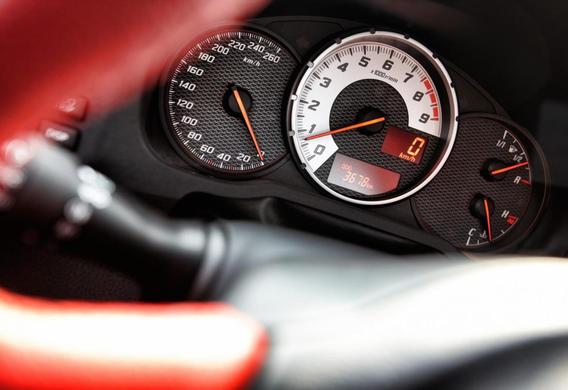
Appointment
There are several reasons why the driver needs to control the speed of the car. Basic-speed limits on public roads. Since the speed of traffic on a particular road is different, it is time to reconcile with the speedometer readings. There's another nuance. The speedometer set contains an even node showing the distance travelled by the car in all the time. It's called the odometer. Thanks to him, you can pinpoint the occurrence of the moment when you need to change, for example, filters or oil. The mileage information is also not the last factor in the purchase of a used car. In addition, the odometer may also show intermediate data on kilometres travelled. On vehicles that are not equipped with an onboard computer, this function is suitable for calculating the fuel consumption, or to detect the distance, say, from work to home.
The artist and inventor Leonardo Vinci created in 1500 a sketch of an instrument that could determine the speed of the crew. But the order of three hundred years passed before such a mechanism could be used to measure the speed of steam locomotives.
The invention of the motor speedometer is attributed to the engineer, Otto Schultz. The device is dated 1902. It is believed that the first car company, which installed the speedometers on the dashboard, was Oldsmobile. Like any other complex new device, the speedometer was expensive and was not included. However, the presence of a speedometer soon became a mandatory condition for the operation of the vehicle. Most car models were equipped with two speedometers: small and large. The second was to get a police officer to look at the speed of a passing car.
The working principle of the speedometers has remained almost constant over a hundred years. During this time, only the mechanism of the indicator changed. So, one time was a popular tape speedometer. Instead of the usual arrow, the horizontal window with the ticks moved the ribbon. Such speedometers have been particularly popular in America and Japan in 60-70 years. This type of device was also available in Soviet cars, for example, Gaza 24. There were also so-called drum speedometers. They were standing on many pre-war cars of different companies. The speed in them was displayed due to the torque drum with the numbers on it.
All this is about mechanical speedometers, and digital has appeared relatively recently-in 1993.
Device and the principle of action 1
There are two types of speedometers: mechanical and electronic. If the first is supplied by a mechanical indicator, such as an arrow, the second, may instead have an indicator of electronic-numerals on the display. Stop separately on the device and the operating principles of each type.

The most popular type of mechanical speedometer is magnetoduction. It consists of two engines: speed and counting. The first consists of a rope (flexible shaft), magnetic disk, coil, and springs. The volume is connected to the transducer at the gear shaft. The transducer shall convert the shaft of the shaft of a shaft into a rotation of a cable. The cable's spinning the magnetic disk. The top of the disc is a rotating coil with the axis. The disk drive creates a magnetic flux that excels in its turn in the coil. As a result, the reel starts to follow the disc as well. The spring limits its rotation to the speed of the disc rotation. The spring has a certain stiffness, which depends on the accuracy of the speedometer. The speedometer is fixed at the end of the rotating axis.

A speedometer node is also present in the form of a cable. The counter itself is a series of drums, which are connected in series with a gear train. As a result of this, ten turns of the first drum, one turns next to it, and so on. Normally, five drums are used for the counter. Therefore, the maximum value is 99,999. When this number is reached, the counter is reset.
The electronic speedometer is no different from mechanical. But unlike it, the speed sensor in the electronic speedometer is no longer spinning the flexible shaft, but it transmits the electrical pulses to which the needle turns. The movement of the arrow depends on the number of impulses received per unit time.
The odometer in this case is arranged in the same way, except that the drums are driven by a small electric motor.
Advantage and disadvantages
Today, the mechanical type of speedometers is practically not used. The first reason is that its accuracy is much greater than that of the electronic one: 15% against 5%. Second mechanical transmission and details of such a speedometer over time are subjected to wear and tear and should be replaced. This is a rather laborious operation, as the cable must be routed without a single perpletration.







